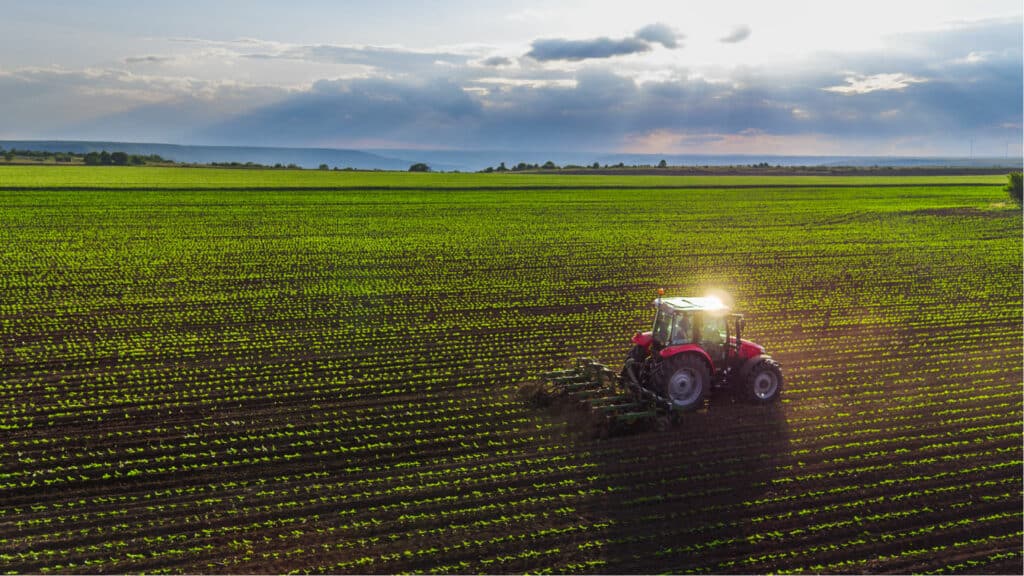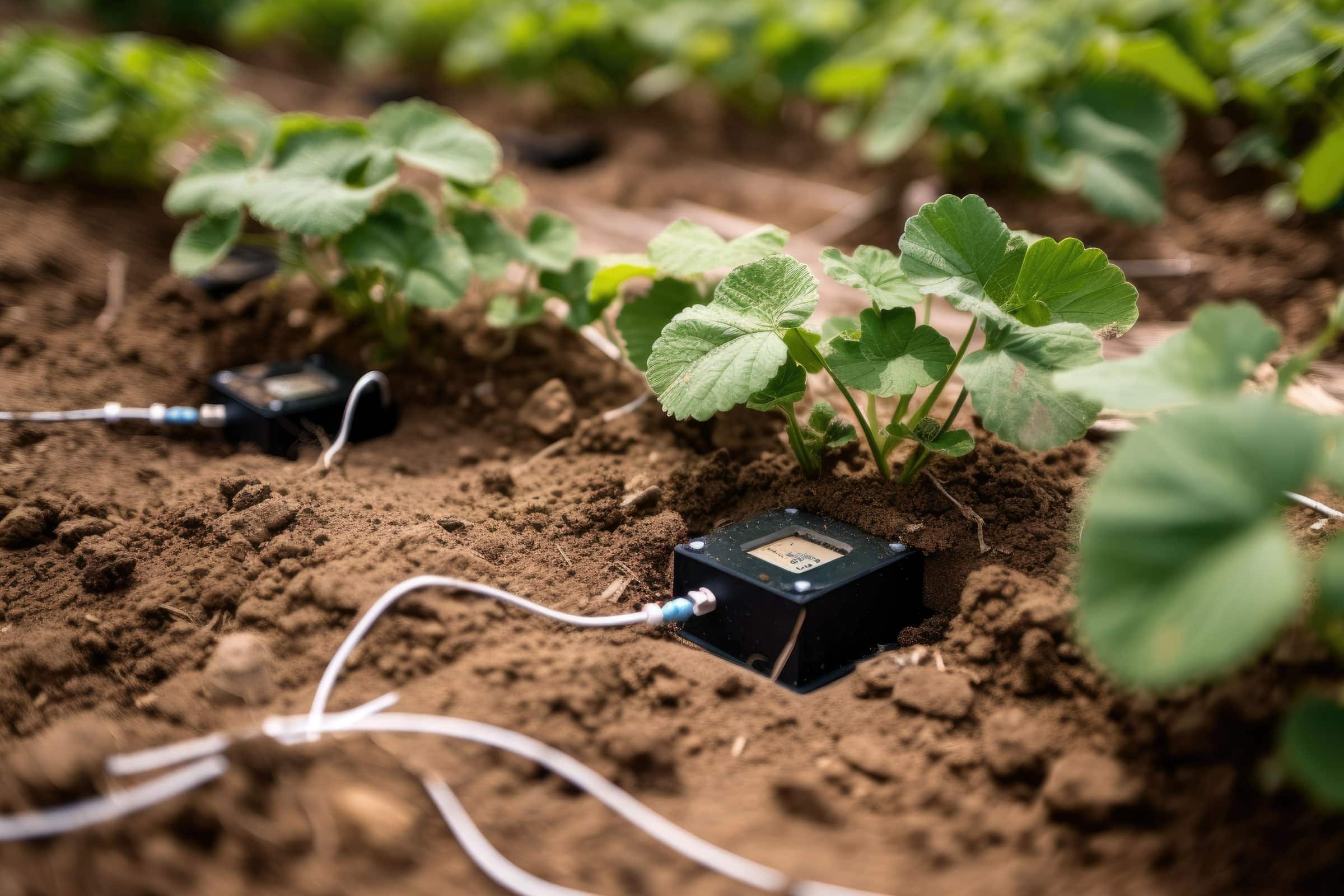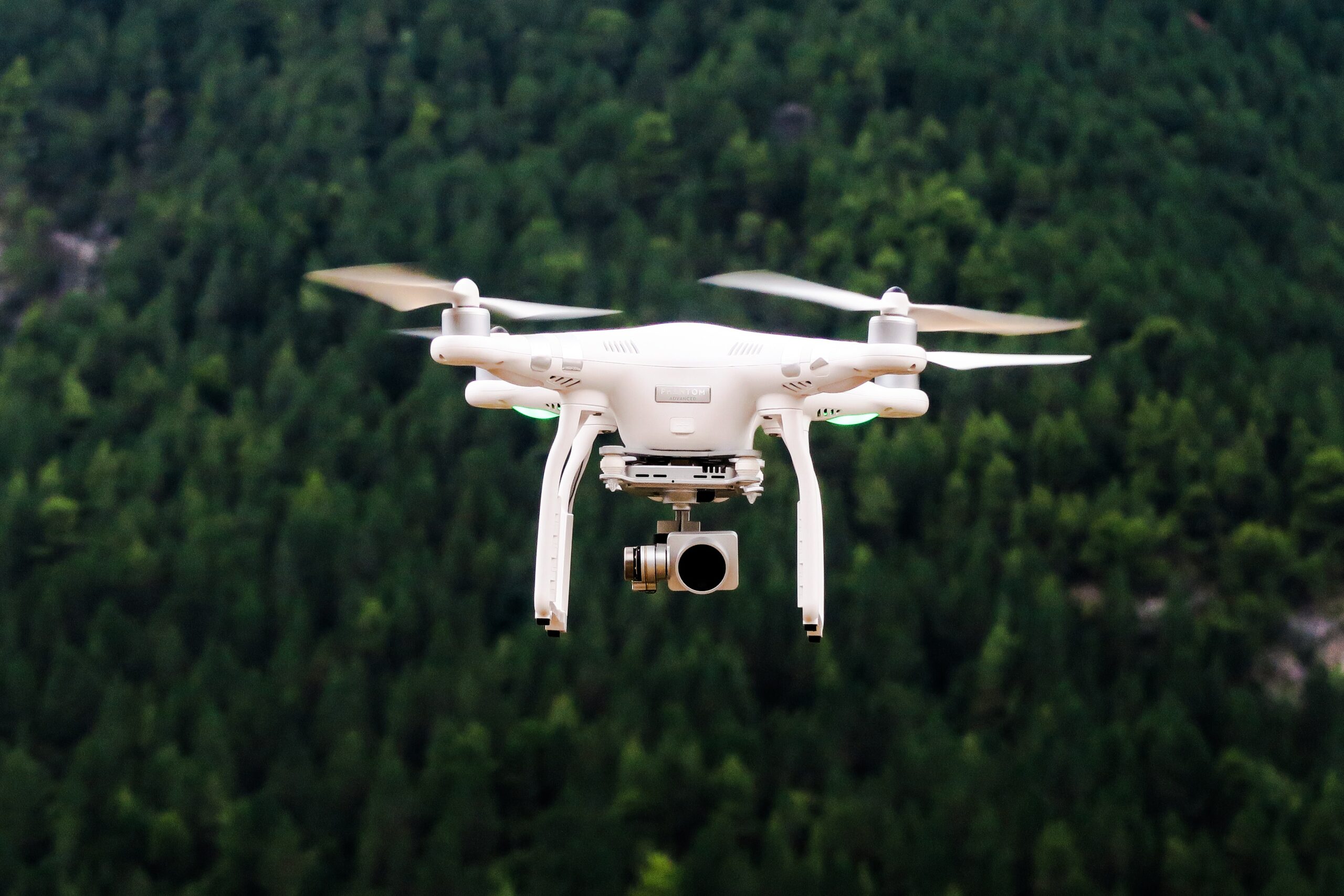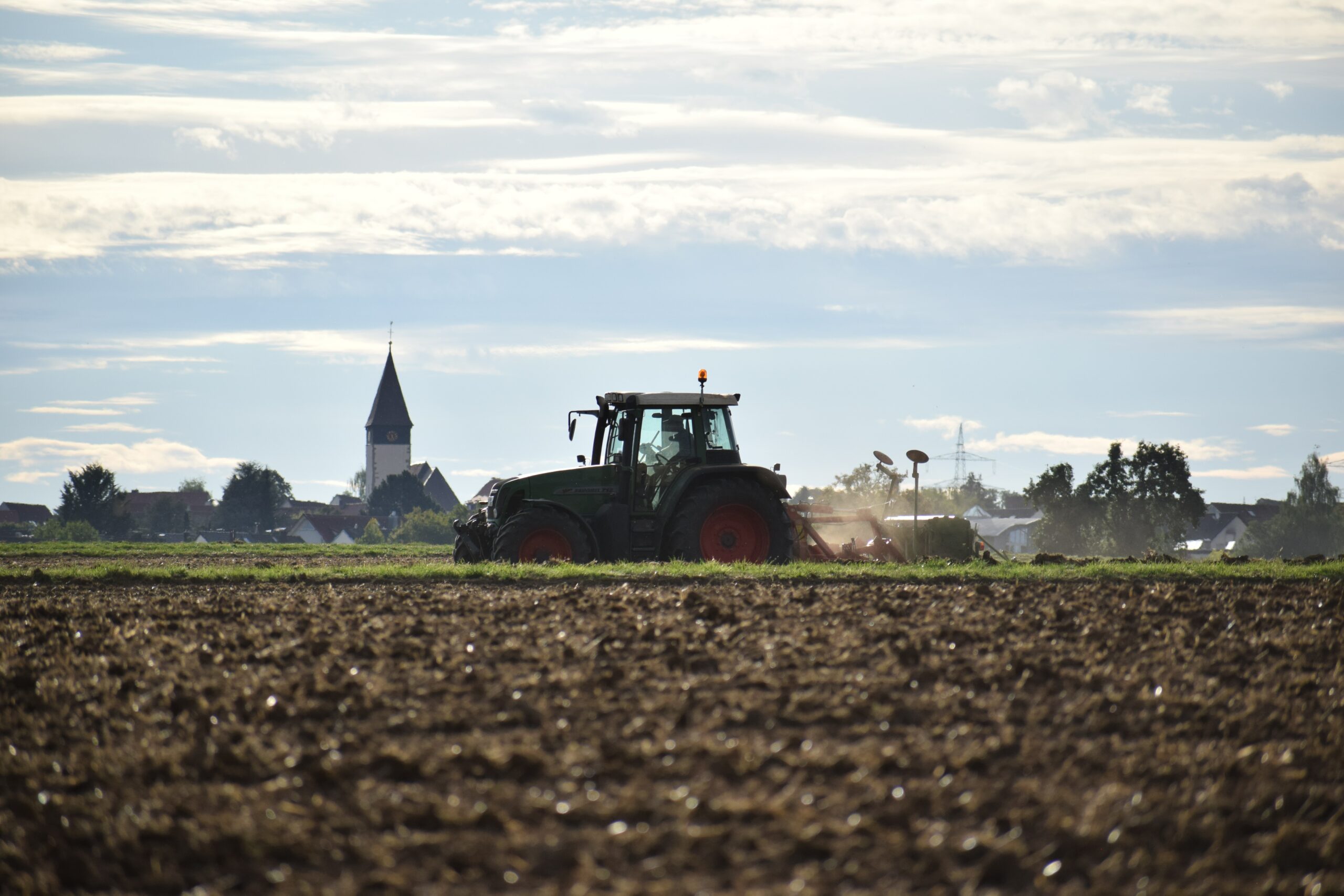Technology in farming and agriculture is evolving, and although often its uses and effects are often unseen by the general population, for industry specialists it’s become impossible to ignore the role the Internet of Things (IoT) plays in a modern, climate-smart agriculture system.
The use of IoT in farming, which is typically termed smart farming, or IoT agriculture, is growing in popularity as a way to help farmers become more efficient and productive. For instance, IoT-based environmental monitoring methods routinely enable farmers to easily track and monitor their crops, soil, water levels and climate conditions accordingly.
While this may sound unremarkable, the total IoT agriculture market was valued at $13.76 billion in 2022. This is expected to grow to $29.71 billion by 2030, highlighting how fast this vital industry for supplying our food, drink and subsistence products is adopting new IoT technologies and systems.
In this post, we’ll explore what IoT agriculture actually is, what devices are used within the smart farming industry and the benefits of taking on a modern agricultural approach.
What is smart farming?
Smart farming is the use of innovative IoT technology and data-driven strategies to optimise crop yield, improve farmer productivity and reduce environmental impact.
It involves the use of sensors, cloud computing, machine learning and other sophisticated data analysis technologies to help farmers find problems early and make decisions that increase their yields while reducing costs.
IoT devices are used to collect real-time data from the field, helping cultivators make informed decisions about planting and harvesting cycles, irrigation and fertiliser management.
The ultimate goal of IoT agriculture is to minimise risk, increase profit margins and protect the environment – goals that are becoming increasingly important as climate change puts pressure on farming operations around the world, especially considering some practices such as livestock farming contribute to more than 14% of global greenhouse gases production.
Additionally, with the percentage of people working in agriculture globally dropping from 44% to 26% within 29 years from 1991 to 2020, these new technologies and methods have helped a struggling industry gain back control and massively improve its efficiency in the face of critical resource shortages.
Which IoT devices are used in agriculture?
There are a range of smart farming technologies used in IoT agriculture, each offering something different to a farmer’s diversified operations.
It enables us to look at and uncover what the Internet of Things in agriculture actually looks like in practice. Below are three specific examples:
1) Agriculture sensors
One of the key IoT devices used in agriculture is monitoring sensors, which have helped revolutionise the way in which data is acquired and put into practical use within the sector and industry.
These IoT agriculture sensors have a range of use cases, all helping implement a method known as precision agriculture.
Also sometimes termed precision farming, precision agriculture is a data-driven approach to farming, which helps to improve the efficiency of each operation or cycle through the use of real-time data. By implementing a precision farming method with IoT sensors, farmers can use optimal quantities of fertiliser, water and pesticides to manage, maintain, protect and grow their crops. Helping raise better, healthier, more consistent and larger yields.
Some components of precision agriculture practices include:
- Crop monitoring and management
- Soil quality monitoring
- Weather forecasting
- Greenhouse automation
- Livestock monitoring and management.
All real-time data from these IoT sensors is uploaded and compiled into a centralised or cloud-based database, allowing for further predictive analytics and access via portals and Apps.
End-to-end farm management systems are also used to keep all the data and sensors connected and operationally managed in one primary environment.
2) Robotics in farming
IoT farming is much more than sensors and real-time data. Robotics and automation are also playing a larger role in modern agriculture.
Robots can automate the tedious tasks associated with crop maintenance, such as weeding and harvesting, freeing workers from manual labour and allowing farm businesses to focus on more complex tasks that require human intelligence and oversight.
For example, weeding robots will use their large database of images to detect similarities with crops and identify those which should not be present in the fields. This means they can be removed or sprayed with pesticides or herbicides.
Harvesting robots work in similar ways, using their collection or library of images as a reference and making decisions based on this data. They are also capable of picking out specific fruits or vegetables by colour, size and shape, ensuring that no defective produce makes it to distribution and the market.
IoT technology also allows vehicles, such as tractors, to be automatically navigated through a GPS location system. Not only does this reduce the amount of time spent manually operating vehicles performing standard routine tasks, but it minimises fuel costs and improves the efficiency of farming operations.
Such advances in robotics are becoming an increasingly integral part of IoT agriculture systems, allowing farmers to increase their efficiency and improve yields, while reducing costs.
3) Agricultural drones
Agricultural drones are another kind of smart farming technology often used in IoT agriculture for a variety of purposes.
Drones are often used to inspect the land and its crops from above, eliminating the need for intensive manual labour and by offering a different perspective of the land. For instance, by taking real-time pictures of fields and crops, drones can help detect potential issues such as crop disease or pests, allowing farmers to quickly identify and respond appropriately to those threats.
Drones also provide a cost-effective way of monitoring large tracts of land – something that would otherwise be difficult or expensive to do with manual methods. This may involve analysis or site security checks. Furthermore, they can help save time by providing data more quickly and accurately than traditional, manual methods.
The benefits of smart agriculture
As you can see, there’s a lot to merit about IoT agriculture and its potential for creating better ways of managing farming operations and ensuring high-quality produce is available for consumption. By using technology such as sensors, robotics, and drones, farming operations are able to increase efficiency, reduce costs, and better manage their resources, while ensuring defective or harmful produce is identified and eliminated.
These sorts of IoT technologies provide farmers with a range of benefits, including:
- Cost management and waste reduction
- Reduced environmental footprint
- Lower production costs
- Less labour-intensive manual work
- Enhanced product quality and yields
- Automated processes
- Access to real-time data collected by smart sensors
- Enhanced Safety
What to consider for your IoT farming solution
The possibilities that IoT provides for agriculture are endless, but you must first consider several key factors when designing an effective IoT smart farming solution.
First, you should look at the existing infrastructure on your farm operations and how well it can support the implementation of IoT technologies. Also consider the size of your farm, as this will determine which type of sensors are best suited for your needs.
The IoT hardware used for this operation will need to be reliable and stable, as they will be dealing with potentially harsh weather conditions or other environmental factors.
An ideal IoT device will involve low levels of maintenance, although this can be difficult to avoid due to these sensors being out in a field unattended for lengthy periods in often inclement conditions and therefore open to potential damage.
Having durable and mobile smart farming applications can help reduce the need for manual maintenance, which in turn saves both time and money.
As with any IoT operation, connectivity lies at the heart of it all. The connection should remain resilient and strong, offering maximum uptime. For these reasons, it is imperative to be using IoT SIM cards specifically designed for the agricultural industry.
Finally, you should ensure that all components are secure, and any data collected is encrypted to prevent malicious attacks or unauthorised access. It is also important to invest in a reliable IoT platform as this will make it easy to collect, manage and analyse data from your sensors.
Grow stronger connections with Caburn Telecom
It’s clear to see that smart agriculture is the future of farming, and it’s here to stay.
With the right IoT technology, connectivity solutions and practices in place, farmers are now able to take their operations to the next level by solving traditional problems in creative and new ways, streamlining their processes and increasing efficiency – while reducing costs.
At Caburn Telecom, we are industry leaders in IoT connectivity solutions, providing our customers with reliable and secure coverage in remote areas. Our global network is designed to keep your connected devices running 24/7, even in the most challenging of environments.
If you’re looking to take advantage of IoT technologies for your farming operations, get in touch today to see how we can help you grow.




